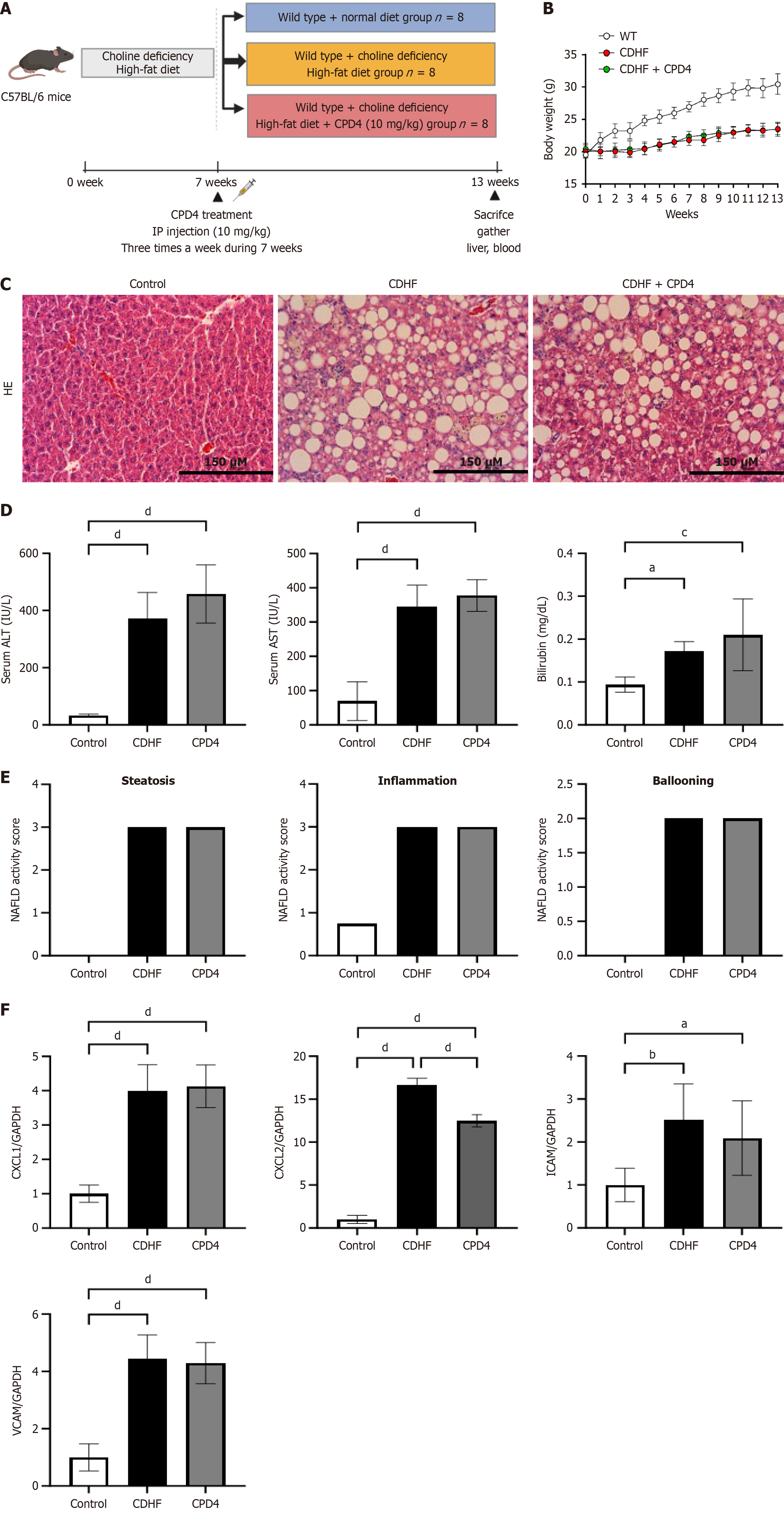Copyright
©The Author(s) 2025.
World J Gastroenterol. Feb 14, 2025; 31(6): 96782
Published online Feb 14, 2025. doi: 10.3748/wjg.v31.i6.96782
Published online Feb 14, 2025. doi: 10.3748/wjg.v31.i6.96782
Figure 5 Mixed lineage kinase domain-like protein adenosine triphosphate pocket-binding inhibitor could not attenuate steatosis and inflammation in non-alcoholic fatty liver disease animal model.
A: Overview of animal experiment. Mice were fed choline-deficient high-fat diet for 13 weeks. After six weeks, mixed lineage kinase domain-like protein (MLKL) adenosine triphosphate (ATP)-binding inhibitor (Compound-4) (10 mg/kg) was injected intraperitoneally three times a week for a total of seven weeks; B: C57BL/6 mouse body weight through the 13 weeks of experiment. No significant difference was evident between choline-deficient high-fat (CDHF) and CDHF + MLKL ATP-binding inhibitor (Compound-4); n = 8; C: Liver tissue sections were stained with hematoxylin-eosin staining, 200 ×; D: Serum alanine transaminase, aspartate transaminase, and total bilirubin were measured (n = 8/group); E: Steatosis, inflammation, and hepatocyte ballooning among control, CDHF, and MLKL ATP-binding inhibitor (Compound-4) groups; F: CXCL1, CXCL2, ICAM, and VCAM mRNA expression levels were measured via quantitative real-time polymerase chain reaction in liver tissue. P calculated compared to control, choline-deficient high-fat, mixed lineage kinase domain-like protein adenosine triphosphate binding inhibitor (Compound-4). aP < 0.05. bP < 0.01. cP < 0.001. dP < 0.0001. HE: Hematoxylin-eosin staining; CDHF: Choline-deficient high-fat; GAPDH: Glyceraldehyde 3-phosphate dehydrogenase; CPD4: Compound-4; ALT: Alanine transaminase; AST: Aspartate transaminase; NAFLD: Non-alcoholic fatty liver disease.
- Citation: Xuan Yuan HN, Kim HS, Park GR, Ryu JE, Kim JE, Kang IY, Kim HY, Lee SM, Oh JH, Yoon EL, Jun DW. Adenosine triphosphate-binding pocket inhibitor for mixed lineage kinase domain-like protein attenuated alcoholic liver disease via necroptosis-independent pathway. World J Gastroenterol 2025; 31(6): 96782
- URL: https://www.wjgnet.com/1007-9327/full/v31/i6/96782.htm
- DOI: https://dx.doi.org/10.3748/wjg.v31.i6.96782









